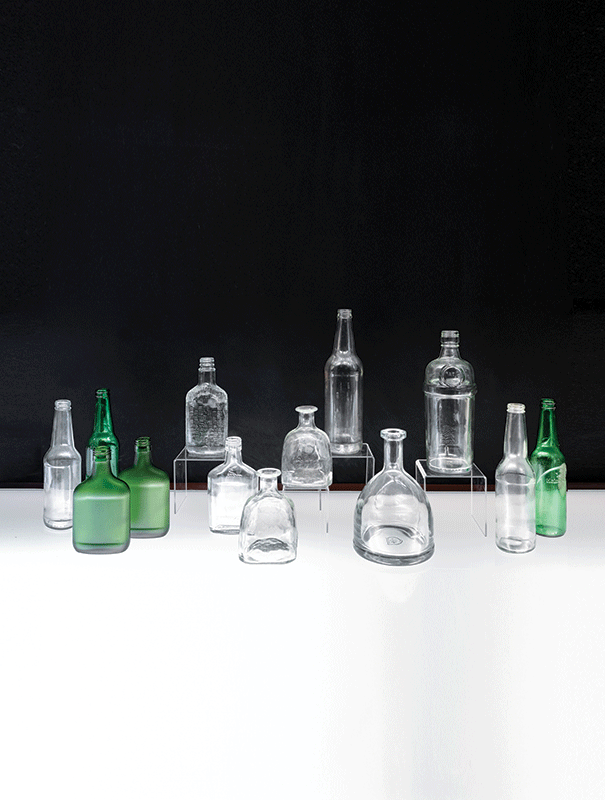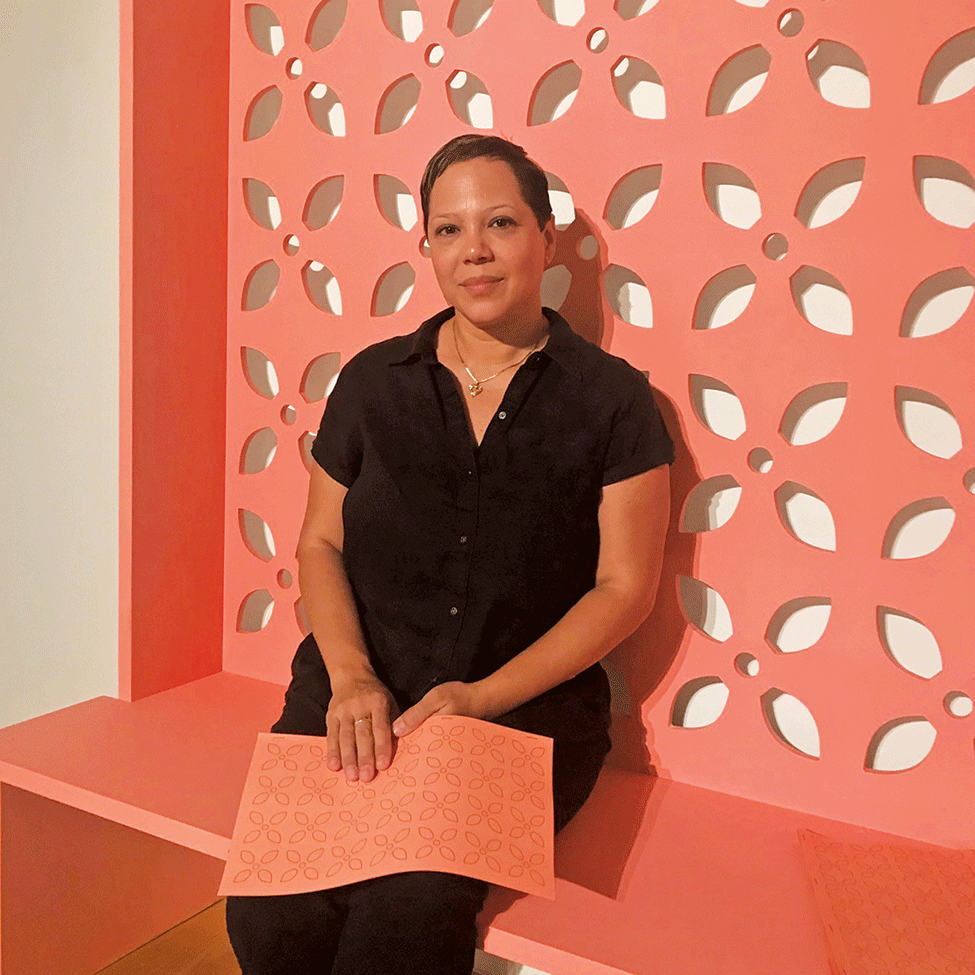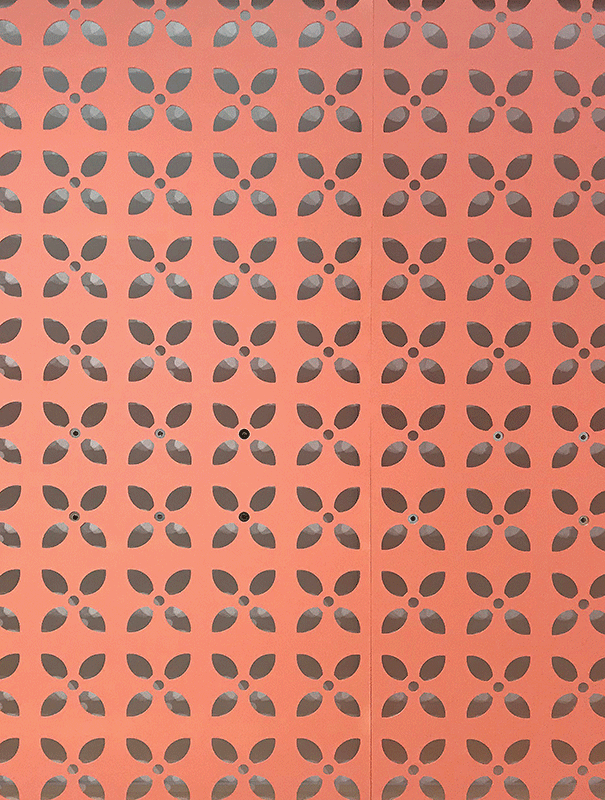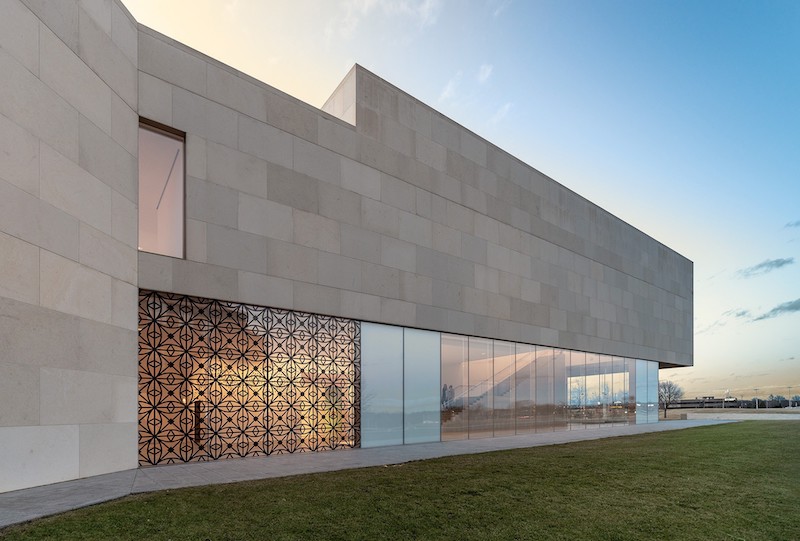Artist Edra Soto: Mining Personal History to Create Artistic Engagement


By ALISON REILLY
Edra Soto’s warmth, generosity, and kindness are apparent (and contagious). She speaks candidly about her work, her influences, and her upbringing in Cupey, Puerto Rico. Her motivations, her life experiences, and her perspectives push her audience to more closely examine their own neighborhoods, sidewalks, fences, and homes. In a contemporary art world that can often reject the participation of the audience, Soto takes the hands of her viewers and looks them in the eye. She acknowledges their bodies, their physical presence, and their memories. Her artistic and personal lives are bound together, which some might consider a great risk. However, her exceptional body of work demonstrates the opportunity for shared growth by revealing vulnerabilities. Below is an edited version of our recent conversation about her move to Chicago, her ongoing series GRAFT, and her upcoming projects.
Chicago Gallery News: Can you tell me about how you grew up? Which part of Puerto Rico are you from?
Edra Soto: I grew up in a middle class family in Cupey, Puerto Rico. Cupey is the biggest and most populated barrio in the metropolitan area of San Juan. Both my parents worked hard for my brother and me. My father worked for an insurance company and for the military through the air force. He traveled a lot. My mom stayed with us at home and did many jobs. She had a home nursery; she ran a commercial ceramic business with my dad at home; and she was a baker. She made amazing wedding, quinceañera, and birthday cakes. I have childhood memories of chewing hard sugar flowers and looking at my reflection in the immense mirrors she made by pouring sugar in order to create a fake pond. Perhaps that was the beginning of my appreciation for installation work.
CGN: What did it feel like to move from Puerto Rico (via Paris) to Chicago?
ES: I felt fortunate to have parents that had faith in me and who could help me make the move. But I also thought that I was not going to make it outside of Puerto Rico. I became a commercial artist very early in my life. During my last year at Escuela de Artes Plásticas de Puerto Rico I won a few awards at my bachelor’s graduation and sold out two shows at a commercial gallery in San Juan. My parents were impressed and motivated to help me transition into higher education.
It took me awhile to get used to Chicago’s weather. I even did an installation, titled I Love Chicago Project, dedicated to my relationship with Chicago, the School of the Art Institute, and the weather. I created an alter ego in the form of a lion tamer to symbolically build self-empowerment. This was my first time bringing people together to activate a project. I invited artists I met at the school, my roommate, my boyfriend (now my husband), and whoever wanted to be a part of this project. I made posters to promote the events and opened my semi-private studio for visitors.

CGN: You mentioned your commercial success as an artist in Puerto Rico, but you have now moved away from the gallery/artist relationship model. How do you support yourself?
ES: After grad school, I supported myself by working at a Chicago public school. Some years later, I worked at a charter school. I dedicated ten years of my life to teach high school. It was hard work, but I learned a lot from the experiences. I met wonderful students who brought great joy and pride to my life. After those ten years, I built enough confidence to teach at the college level. I’ve been a lecturer at the School of the Art Institute of Chicago for the past five years and just recently started to teach an Introduction to Social Engagement course at the University of Illinois in Chicago. As my visibility as an artist increased, I started to get approached by colleges and universities to lecture and do exhibitions. These opportunities increased to the point where I could become a freelancer.
CGN: Do you encourage other artists to follow your example?
ES: Perhaps following my path is not even practical for me. I tend to live in the moment and my planning is mostly work-related, not life-related. My life works because my art works, and I try to keep that way. It is not a predictable or financially stable situation. At this precise moment I don’t feel great financial support, but I am creating projects that might bring financial support in the future. So, I’m still gambling.

CGN: How has your experience as an art teacher in Chicago public schools shaped your practice as an artist?
ES: Many of the methods and materials I used with my high school students became a part of my artistic practice. Structure doesn’t manifest naturally on me. When I’m telling a story, I have to make a conscious effort to keep it on track to build a natural progression. Becoming a high school teacher forced me to work with a type of structure that allowed me to keep order. To be an administrator, you have to be organized. It turns out that so much of the work I do, as an artist, is administrative. If I’m not efficient at keeping track of what needs to get done, I will miss deadlines, opportunities, and even relationships.
CGN: What is your studio like?
ES: My studio looks like a warehouse! My process is very embedded in my daily life. I’m less of a craftsperson and more of project manager, designer, and researcher.
CGN: In 2017-2018 you presented Open 24 Hours at the Museum of Contemporary Art Chicago (MCA). In an interview you stated, “Putting the bottles in other people’s hands is putting the responsibility of littering in their hands, which was my initial motivation for picking up the bottle.” Can you talk about your relationship with the viewer (or participant)? Why is it important for you to put the responsibility of littering in their hands and how does that relate to your motivations as an artist?
ES: I consider the action of picking up garbage my civic duty. I learned this when I was in ninth grade. I forget a lot of things, but that lesson I never forget. A teacher took a group of students and me to a hallway and told us, “Even if it’s not your garbage, you pick it up, and place it in the trashcan.” The action of picking up garbage became a sign of education.
This is the same model brought to life in Open 24 Hours. The work is about respect for the land, appreciation for the place you live, and the people living in it. Cleaning can become a conversation on values, from self-value, to value of a place, to others’ values.
At the MCA, all the refuse that I collected in 2017 was on display to evidence what I witness daily. I designed a transactional procedure between the museum visitor and me. I created a contract that they had to sign if they wanted to acquire, or “adopt” as the museum described it, a glass bottle that I had found in my neighborhood, picked up, and cleaned. In the contract, I describe the bottle as “a piece of American history” to instigate intrigue in the meaning behind the bottles. The procedure was a strategy to elevate the desire and value of these objects. They taught me about a history that I was not aware of, so I couldn’t simply offer them for free. Through the procedure, I also asked people for their time. Perhaps time is one of the things we all value the most.
CGN: You started your ongoing work GRAFT in 2013. What does the title mean?
ES: GRAFT is an imaginary migration. Citing structures known as quiebrasoles and rejas found prominently in Puerto Rico, GRAFT physically interconnects existing architecture to a site-specific place while conceptually representing an imaginary transplant or migratory gesture.
CGN: Do you keep an inventory of quiebrasoles and rejas patterns? Are the patterns in your work based on ones you have seen, or do you create new patterns?
ES: I source all the patterns for GRAFT. My visits to Puerto Rico have been steadily increasing since my father passed in the summer of 2017. But I’ve been documenting quiebrasoles and rejas patterns for many years, even before I started the project.
I used to make drawings of the patterns, but at the time I didn’t see great value in the gesture. Living a greater part of my life surrounded by these patterns makes me sensitive to the role they play in visual culture. Presenting them through architectural interventions becomes a way of reinstating them rather than reproducing them. The history that this project unveils explains why it is so easy to “borrow” their beauty without thinking about their greater cultural significance.
CGN: Do the materials of quiebrasoles (concrete) and rejas (wrought iron) resonate with you?
ES: The purpose of concrete and wrought iron to the casa criolla (common house) in the Caribbean was for protection and ventilation. These are familiar, raw, nostalgic, and even seductive materials to me, but I wouldn’t appropriate them and take them out of their original function and context.
CGN: How does it feel to present GRAFT in different settings? For example, in 2013 you installed it at Terrain Exhibitions in Chicago and recently in 2018 at the Untitled Art Fair in Miami.
ES: At both of these spaces the architectural interventions were remarkable in terms of visibility and audience responses. They both motivated creative thinking and negotiation of space. At Terrain it was the first architectural intervention I’ve made. At Untitled I took the opportunity to introduce photo documentation as a new element. I embedded small viewfinders in the circular spaces of the structure. By peering through the viewfinders, the audience is met with an image documenting my everyday life during visits to Puerto Rico. Photos of my childhood home, scenes from various neighborhoods, and destruction from Hurricane Maria are just some of the images viewers see. The act itself is akin to peering through the quiebrasoles and rejas surrounding a Puerto Rican home to glimpse the house behind the walls.
CGN: Have you presented GRAFT in Puerto Rico?
ES: Not as an architectural intervention; it would be redundant. At the Museo de Historia, Antropología y Arte de la Universidad de Puerto Rico, documentation of GRAFT was included as part of an exhibition titled Ida y Vuelta curated by Dr. Laura Bravo. I recently donated these prints to the Museo de Arte Contemporáneo de Puerto Rico for their permanent collection.

CGN: For each iteration of GRAFT you include a literary component. Why is that important to you?
ES: GRAFT allows me to expand the multidisciplinary aspects of the project and explore visibility by providing a format that can be disseminated beyond the gallery experience. The literary component creates an accessible history of Puerto Rican vernacular architecture. While quiebrasoles and rejas are popularly recognized in Puerto Rican’s visual culture, there is little exploration or research on the origin of these patterns. Contrary to the familiarity of colonial architecture, vernacular architecture has yet to be included as an exploratory subject in primary and secondary education in the Caribbean. Writers from disciplines of art history, art, architecture, and politics are invited to reflect on rejas in the contexts of their individual fields of expertise. The content is published in both English and Spanish and is available to the public.
CGN: Some iterations of GRAFT include a shelter that resembles a bus stop. Why is this type of structure significant to you?
ES: The elements of GRAFT are specific to each space, and sometimes I include a shelter, reminiscent of a bus stop, that serves as a bench for visitors to sit and read the accompanying publication. Bus shelters in Puerto Rico may be made of concrete, wood, and aluminum. I’ve seen a few made in concrete that integrate quiebrasoles in their design.
CGN: What are your upcoming projects for this year?
ES: Currently, my work is on view until June 2, 2019 at the Nerman Museum of Contemporary Art as part of an exhibition curated by Risa Puleo titled Monarchs: Brown and Native Contemporary Artists in the Path of the Butterfly.
Another group exhibition I’m part of, Art of the Neighborhood, is currently at the Willis Tower through the summer, curated by CNL Projects and Chicago Artists Coalition.
I’m involved in three MacArthur Foundation cultural exchanges! One is currently at Museo de Arte de Puerto Rico in San Juan. The second, an exchange with Cuba, will have its Chicago presentation at the Smart Museum in summer 2019 and in Cuba in 2020. The third, an exchange with Brazil curated by Jordan Martins, will take place in 2020. A long overdue commission for the Chicago Transit Authority’s Blue Line Western station is on its way as well.
This summer I was invited to create work with a client from the Light & Salt Coalition, a grassroots movement that mobilizes individuals and organizations to heal, educate, and empower youth and women in the fight against slavery. My donation will be auctioned at their summer gala.
More information about and works by Edra Soto may be found at www.edrasoto.com
Publisher's note: In April 2019 Edra Soto was awarded the Illinois Arts Council Agency (IACA) 2019 Artist Fellowship Award. Non-matching Fellowships in fixed amounts of $15,000 are awarded to Illinois artists in recognition of their outstanding work and commitment within the arts.






